Spotting Uneven Tire Wear and Suspension Issues
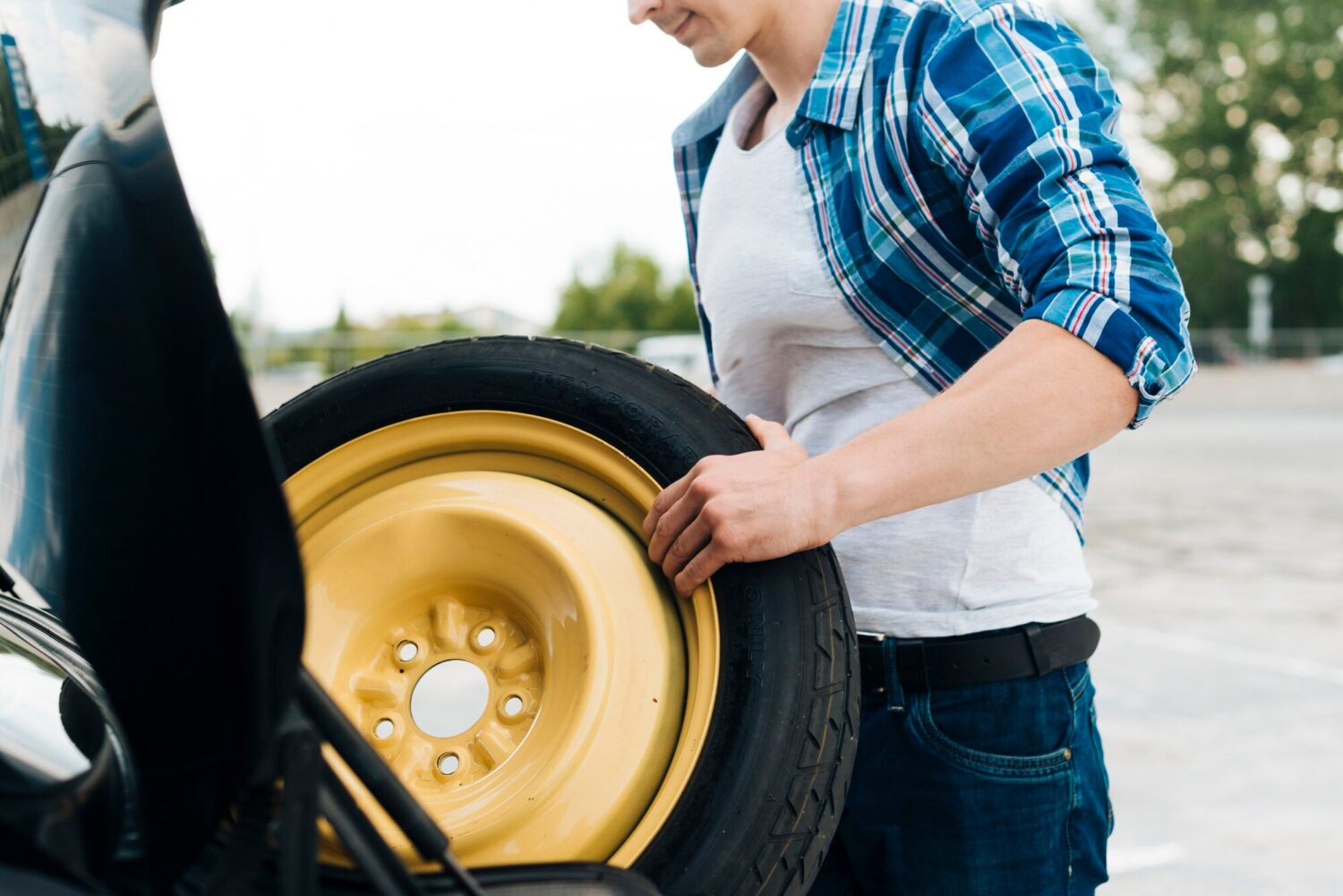
Ever noticed your car tires wearing down in odd spots or showing strange tread patterns? This isn’t just a minor annoyance or a sign of cheap tires. Uneven tire wear often points to bigger problems beneath the surface, especially with your car’s suspension system.
Uneven tire wear happens when the tread wears faster in certain areas. You might see the inside or outside edges thinning out, or even a bumpy, scalloped pattern known as cupping. These tire wear patterns are more than cosmetic flaws. When parts like shocks, struts, or bushings wear out, your suspension can’t keep the tires pressed evenly against the road. This leads to tire wear issues that many drivers mistake for normal aging or a bad tire batch. If ignored, these problems can harm handling, reduce tire lifespan, and put your safety at risk.
Many drivers miss the early warning signs. A small patch of unusual wear today can lead to expensive repairs if left unchecked. Paying attention to these early clues helps you spot suspension problems before they get worse. Knowing how to read tire wear and understanding what those patterns mean can save you money and keep your car safer on the road. In the next sections, you’ll learn how car suspension and tires work together, what common wear patterns reveal, and what steps to take if you notice your tires wearing unevenly.
Tire Wear Patterns and Causes: Decoding the Clues
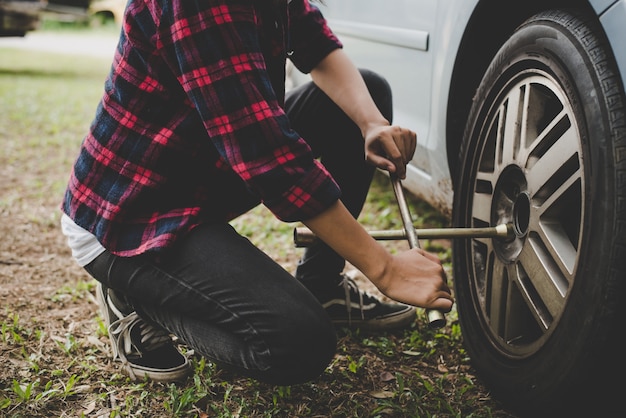
When a driver complains about odd tire noise or strange handling, one of the first things to check is the pattern of wear on their tires. The tread on your car is like a diary, revealing clues about what’s happening underneath. If you’ve ever asked, ‘Why are my car tires wearing unevenly?’ or noticed bald spots, these are hints that something deeper could be wrong. Understanding tire wear patterns and causes is key to catching problems early.
Start with the edges. If the inside or outside edge of a tire is wearing down faster than the middle, that’s often a sign of poor alignment or worn suspension parts. Worn control arm bushings, for example, can allow the wheels to move too much, damaging the tire edges. Center wear, where the middle of the tread wears faster than the sides, points to overinflation. When both edges are worn but the center is fine, underinflation is usually the culprit. If you see a bumpy, scalloped surface (known as tire cupping), this often means the shocks or struts are worn out. Tire cupping suspension problems can make for a noisy, rough ride and put you at risk.
Feathering is another pattern to watch for. Here, the tread blocks feel sharp on one side and smooth on the other. This usually signals misalignment or worn steering parts. Run your hand across the tread – if it feels rough one way and smooth the other, you could be dealing with feathering. Each of these patterns helps answer the question of how to read tire wear and what might be causing it. For a simple overview, check out Tire Wear 101.
| Tire Wear Pattern | Likely Cause | Potential Severity |
|---|---|---|
| Inner/Outer Edge Wear | Poor alignment, worn suspension parts, bad bushings | High – Can lead to blowouts, major suspension issues |
| Center Wear | Overinflation | Medium – Reduced traction, faster tire replacement |
| Both Edge Wear | Underinflation | Medium – Poor handling, reduced tire life |
| Cupping/Scalloping | Worn shocks or struts, unbalanced wheels | High – Unsafe handling, noisy ride |
| Feathering | Misalignment, worn steering or suspension | High – Accelerated tire and suspension wear |
In many cases, cars can destroy a set of new tires in just a few thousand miles if a suspension part is worn out. Pay attention to these tire tread issues. If you spot unusual tire wear patterns, don’t ignore them. Acting early can prevent bigger repairs and keep you safer on the road.
Car Suspension and Tires: How They Work Together
Your car’s suspension and tires are closely linked. When they work together, your vehicle moves smoothly and your tires wear evenly. But if the suspension starts to fail, it quickly leads to problems like uneven tire wear and a harsh, bumpy ride. Many drivers notice their car suddenly feels rough or starts vibrating. Often, the cause is hiding beneath the car, in the suspension system.
The suspension is more than just springs. It includes shocks, struts, bushings, and control arms. Shocks and struts help absorb bumps and keep your tires firmly on the road. Bushings and control arms hold the wheels in place and maintain proper alignment. When any of these parts wear out or become loose, the car puts extra pressure on certain areas of the tire. This is what creates classic tire tread issues like bald spots, edge wear, or feathering on the surface.
Keeping your suspension in good shape means your tires wear evenly, last longer, and give you a safer ride. Even weight distribution and steady contact with the road prevent expensive problems like suspension tire wear or car tires wearing unevenly. If you notice odd tread patterns or your car doesn’t handle like it used to, check both your suspension and your tires. Paying attention to how car suspension and tires interact can save you money and keep you safer on the road.
How Suspension Problems Cause Your Car to Drift or Pull
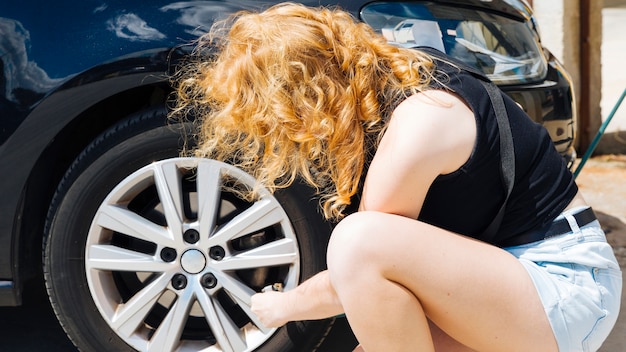
Does your car feel like it wants to change lanes on its own? That’s often your vehicle hinting at a suspension issue. Many drivers notice their car drifting or pulling to one side, especially after hitting a bump or while cruising on the highway. This is more than a minor annoyance – it’s a real safety concern tied directly to your suspension and tire health.
Your suspension system includes shocks, struts, bushings, and control arms. These parts work together to keep your tires gripping the road evenly. When any of them wear out or get damaged, the balance is lost. You might feel the car tug one way, even if you’re steering straight. Sometimes the pull is mild, other times you’re fighting the wheel just to stay in your lane. This isn’t just uncomfortable; it’s a sign that your car tires are wearing unevenly and developing dangerous tire wear patterns. In some cases, tire tread issues show up quickly, like bald spots on one side or edges wearing faster than the rest.
Driving with these symptoms speeds up suspension tire wear. You’ll see tire wear patterns and causes that ruin your tread, shorten tire life, and reduce your car’s ability to stop safely. It also means your engine has to work harder, burning more fuel as you compensate for the pull. Ignoring these problems puts you at risk for accidents and costly suspension repairs down the line.
Quick tip: If your car starts pulling or drifting suddenly, get it checked right away. Suspension and tire issues can get worse fast, and fixing them early can save you money and keep you safer on the road.
Here’s a real example: A pickup came into the shop, drifting right even after an alignment. The real problem was a worn lower control arm bushing. Once replaced, the truck tracked straight with no more pull. If you notice your car tires wearing unevenly or feel your car drifting, don’t just blame wind or rough roads. These are warning signs from your suspension. Pay attention before a small issue turns into something much bigger.
Bad Shocks, Tire Cupping, and Tread Issues: What to Watch For
Have you ever run your hand over a tire and felt uneven, bumpy patches? That’s often tire cupping. This problem shows up frequently on vehicles with worn shocks or struts. When suspension parts can’t keep your tires firmly on the road, the tires start to bounce. This leads to high and low spots across the tread, which is a classic sign of tire cupping suspension wear.
Shocks and struts play a key role in keeping your wheels steady and absorbing bumps. If they wear out, your tires can hop and hit the pavement repeatedly. The result is a tread that looks scalloped or wavy, almost like a potato chip. Cupped tires are not just noisy; they can make your steering wheel shake and increase the risk of losing control, especially on wet roads. If your car vibrates or your tires make a loud, thumping sound at highway speed, it’s a warning sign your suspension may be the culprit.
When checking your tires, look for uneven tread depth, dips, or raised spots. Pay close attention to any areas where the tire is wearing in patches. If you notice these issues, don’t delay repairs. Irregular tread wear can reduce traction, lengthen braking distance, and even cause sudden blowouts. Ignoring bad shocks tire wear can mean replacing all your tires and making costly suspension repairs later. Addressing suspension problems early saves money and keeps you safer on the road. Watch for strange tire wear patterns – they’re your first clue that something’s wrong.
How to Read Tire Wear: A Skill Every Driver Needs
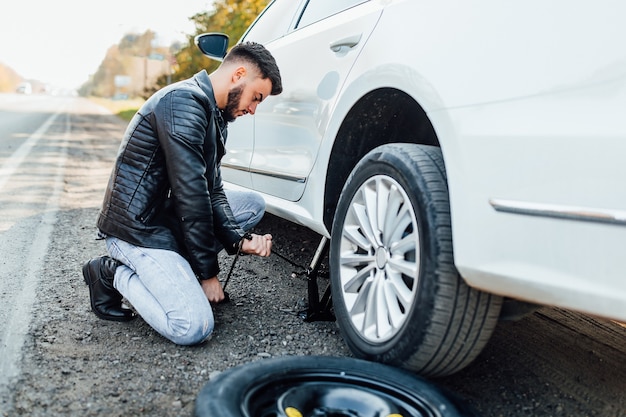
Most people glance at their tires, notice some tread, and move on. But spotting tire tread issues early can make a big difference. Learning how to read tire wear helps your car handle better and keeps your tires lasting longer. Many tires end up in the trash too soon because drivers miss the first signs of trouble. You don’t need special gear or years of experience to spot uneven tire wear – just a careful look and a bit of know-how.
Use this checklist to inspect your tires at home. All you need are your eyes and maybe a small coin.
- Check all four tires – Inspect each tire. Compare their wear. Different patterns can point to different problems.
- Look for uneven tread or bald spots – Run your hand across the tread. High and low spots can signal cupping or suspension tire wear.
- Examine inside and outside edges – Wear on either edge often means an alignment or suspension issue.
- Check the tread center – If the center is worn, it often means over-inflation. Worn edges suggest under-inflation.
- Feel for feathering or scalloping – A sawtooth or wavy feel may point to bad shocks tire wear or tire cupping suspension.
- Try the penny or quarter test – Place a coin in the tread groove. If you see the top of Lincoln’s or Washington’s head, your tread is too low.
- Pay attention to strange noises or vibrations – These often appear before visible damage shows up.
Get into the habit of checking your tires every month or before long trips. It’s a simple step that keeps you safe and can save you money. If you spot signs like car tires wearing unevenly or feel anything unusual, get your car checked. Finding tire wear patterns early helps prevent bigger (and more expensive) problems with your car suspension and tires.
Front Tire Wear Patterns: What They Reveal About Your Car
Front tires often show the earliest and most obvious signs of trouble. If your car tires are wearing unevenly, start by checking the front ones. They handle steering, absorb most bumps, and take on heavy braking. Because of this, front tire wear patterns can tell you a lot about car suspension and tires, as well as alignment issues.
Certain patterns show up more commonly on the front tires. Toe wear appears when the tire tread looks angled or saw-toothed. This usually points to wheels that are even slightly out of alignment. Camber wear is when one edge of the tire – either inner or outer – wears down faster. This is a classic sign that the wheels are tilted too far in or out. Edge feathering makes the tread feel smooth on one side and sharp on the other. This often means loose or worn suspension parts are at fault. These tire tread issues are easier to spot on the front because of all the steering components and extra stress up front. While rear tires can also show odd wear, it’s usually less dramatic.
Imagine a driver who notices the car pulling to the right and spots some feathering on the front right tire. Instead of getting it checked, they shrug it off. Months later, both front tires have bald edges and the steering feels loose and wobbly. A shop finds worn tie rods and a bad control arm – the real cause of the suspension tire wear. Now the driver faces not just new tires, but a costly front-end repair. Learning how to read tire wear early can save you from expensive repairs and help you catch suspension problems before they get worse.
Case Study: Suspension Repair Resolves Mysterious Tire Wear
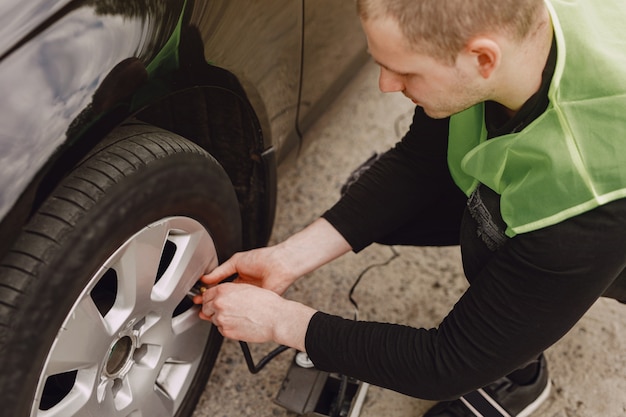
Rob pulled into the shop frustrated. His sedan’s tires had started wearing out quickly on the outer edges, and the car kept drifting to the right on the freeway. He’d already tried rotating the tires and double-checked the air pressure. Nothing helped. The issue kept coming back, and Rob was starting to worry about bigger problems.
During our inspection, we lifted the car and checked every part of the suspension system. We looked at the control arms, bushings, and especially the shocks for any signs of damage. Right away, we found trouble: the front right shock was leaking and one of the lower control arm bushings was badly worn. These issues can cause classic suspension tire wear, like feathering or tire cupping. The tread showed these exact patterns. A quick alignment check also revealed the wheels were slightly off, adding to the uneven tire wear and the car’s annoying pull.
We replaced both front shocks and installed a new bushing, then performed a precise wheel alignment. Rob’s car handled much better after the repairs. The tires wore evenly again, and he even noticed a boost in fuel efficiency. He returned a few months later just to share the good news. If you notice strange tire wear patterns or feel your car drifting, don’t wait. Getting your suspension checked can prevent tire tread issues and save money down the road. For help with these problems, visit Suspension Repair in Rancho Cordova before a small issue becomes a costly repair.
Suspension Tire Wear: Prevention and Maintenance Strategies
Ever noticed your tires looking a little uneven or feeling strange under your hand? Uneven tire wear creeps up on many drivers. One day, your commute feels just fine. The next, your steering wheel vibrates, or your car starts drifting. Many people arrive at the shop with car tires wearing unevenly and don’t realize that suspension problems are often the source.
Preventing suspension tire wear is simple if you stick to a routine. Paying attention to your tires and suspension system helps extend tire life, keeps your ride smooth, and saves you money over time. Here’s a practical checklist to follow:
- Inspect your tires every month. Check for strange tire wear patterns, bulges, or cracks. Watch for tire cupping or feathering, as these can signal suspension or alignment trouble.
- Rotate your tires every 5,000 to 7,000 miles. This balances out tread wear and helps you catch issues early.
- Get a wheel alignment at least once a year. If you hit potholes or rough roads often, consider aligning your wheels more frequently.
- Have your suspension checked at regular service visits. Parts like shocks, struts, bushings, and control arms keep your tires steady and prevent uneven wear.
- Maintain proper tire pressure. Always inflate tires to the recommended PSI. Incorrect pressure can lead to tire tread issues and hide bigger problems.
- Address any new noises, vibrations, or pulling immediately. Ignoring these signs can quickly lead to more serious tire and suspension damage.
When to Seek Honest Repair: Trusting Your Mechanic
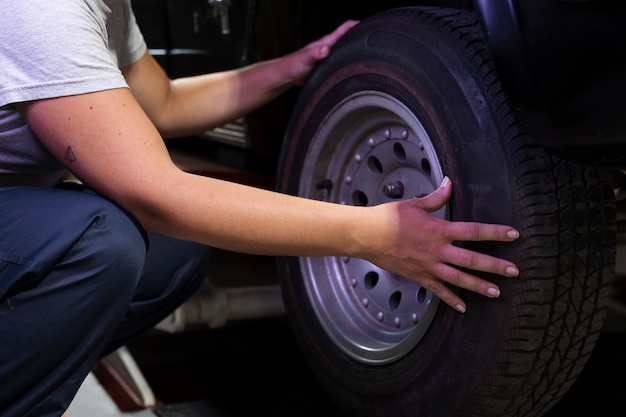
Spotting uneven tire wear or strange tire tread issues means it’s time to be careful about where you take your car. Many drivers think replacing worn-out tires will solve their problems, but often the real issue is hidden in the suspension system. Not every auto shop will take the time to explain why your car tires are wearing unevenly or what’s behind those odd wear patterns. You need a mechanic who is honest, communicates clearly, and cares about fixing the real problem so your car stays safe.
A reliable mechanic will ask about how your car has been driving and listen to your concerns. They will point out specific tire wear patterns and help you understand what they mean. Some mechanics even encourage you to look at the suspension and tires yourself during the inspection. Don’t hesitate to ask questions about how to read tire wear or what each pattern reveals. If you receive vague answers or feel rushed, it’s best to look elsewhere. A proper inspection should include a close look at suspension parts, alignment, and the tires themselves. Finding a shop that values your safety and is willing to explain their process is essential. For an example of what honest repair looks like, visit Honest repair as always. The right mechanic will always put your safety first, even if it means less work for them at times.
Tire Wear and Suspension Myths Debunked
Myth 1: It’s Always the Tires
Many drivers believe their tires are to blame whenever they spot uneven tire wear. It’s a common mistake. While tires can sometimes be faulty, unusual tire wear patterns often signal deeper issues, especially with suspension and alignment.
For example, if you notice wear along the inner or outer edges, or see feathering on your tread, the problem may be worn ball joints, failing control arm bushings, or suspension that’s out of alignment. Changing your tires without checking the real cause means the problem will return, costing you more in the long run. Always look beyond the rubber to find the source of tire wear patterns and causes.
Myth 2: Suspension Issues Are Obvious
It’s easy to think that suspension problems will always make noise or cause obvious handling issues. The truth is, many suspension faults are quiet. They show up as tire tread issues or slight changes in how the car drives, which are easy to overlook day to day.
Tire cupping is a good example. You might not spot it unless you run your hand across the tread and feel the uneven surface. Sometimes, a car will pull slightly to one side, but the change is so gradual that drivers ignore it. Waiting too long to investigate these small signs can turn a quick repair into a much bigger expense. If you spot strange tire wear patterns or your car tires are wearing unevenly, your suspension could be the hidden cause.
Reading tire wear patterns is like reading a warning sign from your vehicle. If you’re ever unsure, get a professional to inspect your suspension and alignment before replacing tires again. It could save you money and help keep your car safe on the road.
Comparing Tire Wear from Suspension Problems vs. Other Causes
Tire wear doesn’t have just one cause. Over the years at MPB Auto Repair, I’ve seen tires wear out from bumpy roads, missed air pressure checks, and worn-out suspension parts. Many drivers blame the tires right away when they spot bald spots or strange tread marks. But the real problem isn’t always the rubber itself. Knowing the source of your tire tread issues can save you money and keep your car safe.
| Tire Wear Pattern | Likely Cause | Typical Location | Severity/Consequence |
|---|---|---|---|
| Inner/Outer Edge Wear | Misaligned suspension, worn control arms | Front or rear tires | Accelerated wear, poor handling |
| Center Wear | Over-inflation | All tires | Reduced traction, shorter tire life |
| Edge Wear (Both Sides) | Under-inflation | All tires | Heat buildup, risk of blowout |
| Tire Cupping | Bad shocks, suspension failure | Usually front tires | Loud noise, unsafe handling |
| Feathering | Poor alignment, worn bushings | Front tires | Pulling or drifting, uneven wear |
| Diagonal/Spotty Wear | Overloading, missed tire rotations | Any tire | Shorter tire life, uncomfortable ride |
Let’s look at two real-life situations. Last summer, a sedan came in drifting left every time it got on the highway. The front tires showed deep cupping and the inside edges were almost bald. The main issue? Both front shocks were completely worn out, and the suspension alignment was way off. After new shocks, a proper alignment, and a tire rotation, the car tracked straight and the new tires wore evenly.
In another case, a driver returned from a long trip with center wear on every tire. The suspension was fine, but the tires were over-inflated by 10 psi. That extra pressure caused the center to wear faster. This was an easy fix – just adjusting the pressure. Both problems caused uneven tire wear, but the solutions and risks were different. Remember, not every uneven tire wear pattern points to suspension trouble. Still, suspension issues often lead to the worst and most expensive patterns. If your car tires are wearing unevenly, check both the usual suspects and the hidden causes deep in your car’s suspension.
